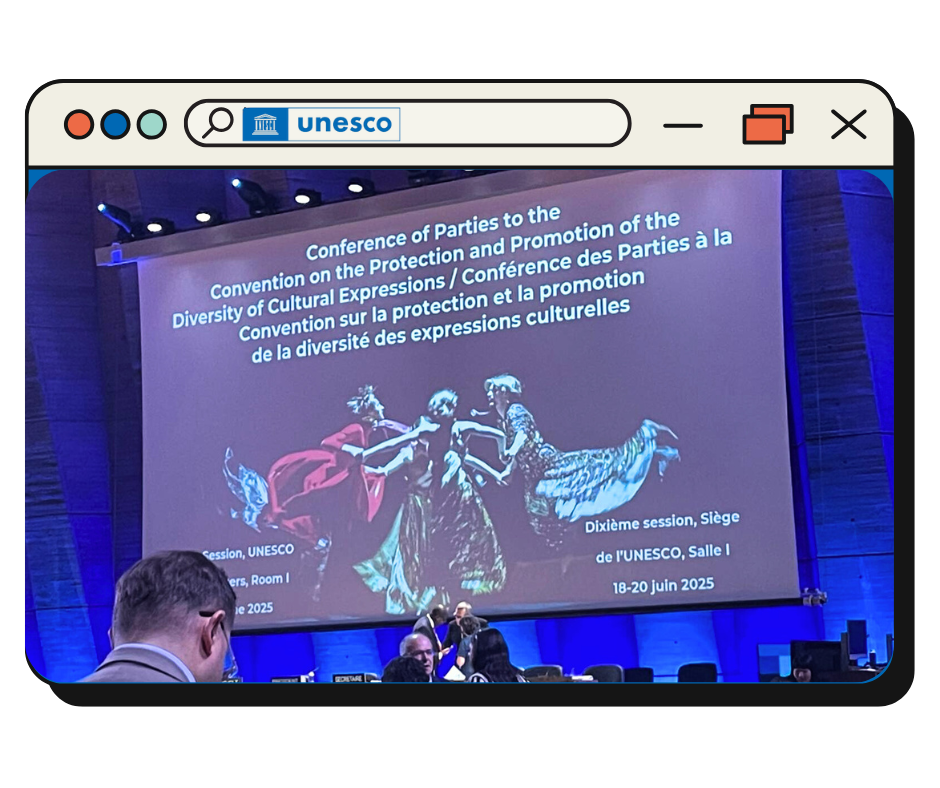Andrés Muñoz Cárcamo, a lawyer and researcher in cultural rights and policies, has advised Chile’s Ministry of Culture and its Delegation to UNESCO since 2023, including as an expert on preferential treatment for developing countries. From this vantage point, he explores the 2005 UNESCO Convention on the Diversity of Cultural Expressions — a landmark treaty now nearing its 20th anniversary. Despite its global influence, the Convention faces pressing hurdles: uneven support for developing countries and new challenges in the digital era, especially with AI. At the 10th Conference of Parties in 2025, governments revisited these issues, even weighing an Additional Protocol. The central question now: can the Convention adapt fast enough to safeguard cultural diversity in the digital age?
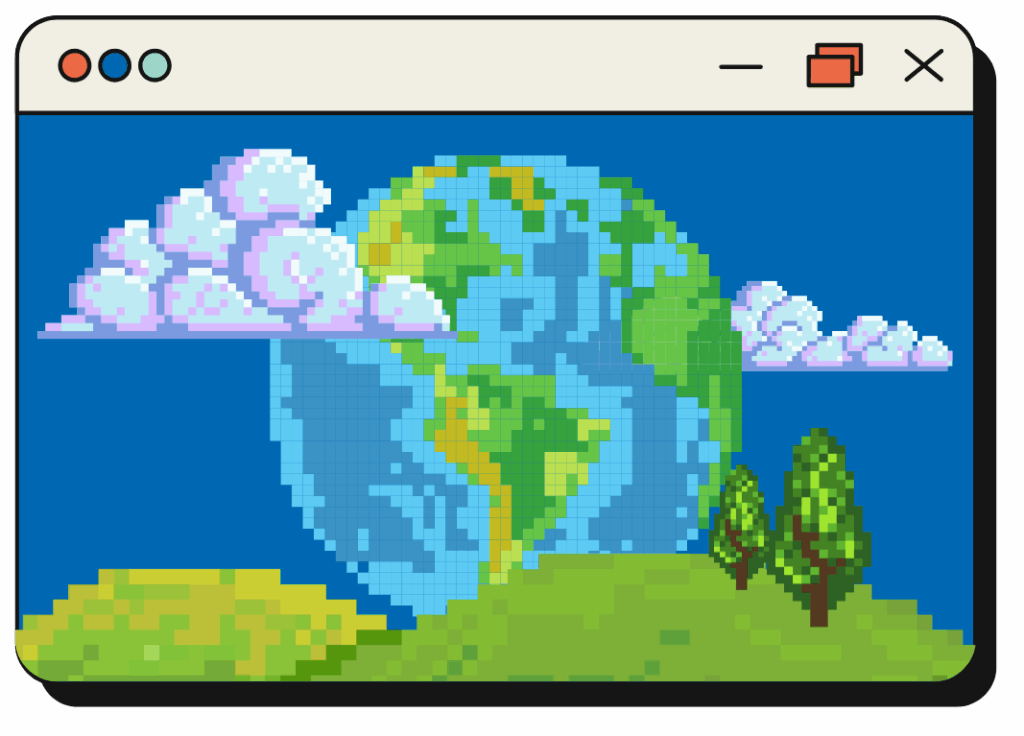
A Personal Note
I was kindly invited by Avant-Garde Lawyers to contribute to their blog after taking part in the most recent edition of their course The Art of Defending Artists. They encouraged me to write on a topic I have been involved with in recent years: the 2005 UNESCO Convention on the Protection and Promotion of the Diversity of Cultural Expressions. Based in Paris, I have advised the Ministry of Culture of Chile and the Chilean Delegation to UNESCO on the follow-up of this treaty since 2023, including serving as an expert in the reflection group on preferential treatment for developing countries.
What follows tries to offer a descriptive account of current debates and developments in the implementation of the Convention as it enters its second decade. As a fundamental part of international culture law, one of the Convention’s main objectives is to achieve more balanced exchanges of cultural goods and services and to increase the mobility of artists and cultural professionals, a matter that may be of particular interest to readers of this blog. This overview may at times read as a bit dense or legalistic, though I hope it remains accessible and useful. – Andrés Muñoz Cárcamo
The Convention’s Implementation and Obstacles
Adopted in October 2005 during UNESCO 33rd General Conference and following intergovernmental debates over the risks that globalization posed to cultural diversity, the Convention on the Protection and Promotion of the Diversity of Cultural Expressions entered into force in March 2007 and currently counts 160 Parties (159 States and 1 regional economic integration organization, the EU).
Building on the Universal Declaration on Cultural Diversity —a 2001 UNESCO declaration stating that “cultural diversity is as necessary for humankind as biodiversity is for nature”— the 2005 Convention is the first legally binding treaty addressing diversity and cultural expressions. These expressions result from the creativity of individuals, groups and societies and have symbolic meaning, artistic dimensions and cultural values that are rooted in cultural identities.
The Convention provides States with a framework to support their creative sectors, affirming their sovereign right to formulate cultural policies and adopt measures to protect and promote cultural diversity. It also establishes mechanisms for international cooperation, especially aimed at supporting developing countries, such as the preferential treatment provision (Article 16) and the International Fund for Cultural Diversity (Article 18).
For almost two decades, this instrument has become an increasingly important reference for national policies and international cooperation in the field of culture. States Parties are required to submit periodic quadrennial reports outlining their measures and policies regarding the diversity of cultural expressions. These reports serve as a monitoring tool and a source for comparative policy analysis. The Convention’s influence can also be seen in domestic cultural legislation and in the inclusion of clauses concerning cultural goods and services within some trade agreements.
The Conference of Parties and the Intergovernmental Committee, the treaty’s governing bodies, alongside the UNESCO Secretariat, oversee its implementation and may adopt Operational Guidelines, intended to clarify and guide the application of the provisions. Civil society also plays a role, with Article 11 calling on States to acknowledge its fundamental contribution to achieving the Convention’s objectives and to encourage its active participation.
“Although these issues had been addressed through respective Operational Guidelines, their implementation has remained very limited…Practical application has been hindered, among other reasons, by limited awareness and understanding of its scope within national administrations.”
Application of the Convention at the national level, however, is often constrained by policy priorities that place limited emphasis on the cultural sector. In recent years, UNESCO, the governing bodies and civil society organizations have underscored limited advancement on two key issues: preferential treatment for developing countries and adapting the Convention to the digital environment. During its 9th session in June 2023, the Conference of Parties adopted decisions to address these specific challenges by establishing two reflection groups: one composed of intergovernmental experts to examine the implementation of Article 16 on preferential treatment, and another of independent experts on the diversity of cultural expressions in the digital environment, both tasked with formulating strategic recommendations to help improve implementation by States Parties.
Although these issues had been addressed through respective Operational Guidelines (on preferential treatment from 2009 and on the digital environment from 2017), their implementation has remained very limited. In the case of preferential treatment, despite being an obligation under Article 16 —according to which developed countries shall facilitate cultural exchanges through appropriate institutional and legal frameworks for the benefit of artists, cultural professionals, and cultural goods and services from developing countries— practical application has been hindered, among other reasons, by limited awareness and understanding of its scope within national administrations, including a lack of interministerial coordination, in both developed and developing countries.
The digital environment, in turn, presents a set of evolving challenges for the diversity of cultural expressions, including limited discoverability of geographically and linguistically diverse content online; algorithmic bias and lack of transparency from dominant global platforms; intellectual property issues affecting creators; and growing concerns over cultural sovereignty, particularly in light of the rapid development of artificial intelligence (AI) systems including generative models. It must be noted that, following the Operational Guidelines from 2017, the Secretariat had developed in 2019 an Open Roadmap for the implementation of the 2005 Convention in the digital environment, a framework document intended to guide national efforts in putting the guidelines into practice. Nevertheless, only 4 States have submitted aligned plans, reflecting limited engagement with this tool.
In this context, the two reflection groups on preferential treatment and the digital environment held meetings in 2024 and issued their reports in early 2025, presenting 5 recommendations by the first group of experts and 11 by the second. These were submitted for consideration by the Intergovernmental Committee, which at its 18th session in February 2025, adopted them —subject to endorsement by the Conference of Parties— and called for further exploration of synergies between the two sets of recommendations. Nonetheless, recommendation 1 from the reflection group on the digital environment, which proposes to adopt an Additional Protocol to the Convention to address the challenges in the digital environment, was left pending for resolution by the Conference of Parties.
10th Conference of Parties
At this statutory meeting, held in June 2025 as a prelude to the commemoration of the Convention’s twentieth anniversary, States reaffirmed the adoption of the recommendations to improve the implementation of Article 16, committing to measures to strengthen monitoring, facilitate the sharing of good practices, and promote technical cooperation, including by reinforcing the role of national focal points.
Concerning those on the digital environment, the Conference reaffirmed the adoption of recommendations 2 to 11, which call for improved sharing of information, stronger monitoring and reporting, capacity-building initiatives, advocacy on culturally responsible practices, and targeted UNESCO action on AI and culture, among other measures. The call to update the 2017 Operational Guidelines, although not included among these recommendations, arose from the Parties’ discussions and became a supplementary outcome of the Conference resolutions.
“Concerns were raised regarding the need for more effective oversight of digital technologies and AI in cultural contexts, including stronger protection of creators’ rights.”
On the more contentious recommendation 1 regarding the Additional Protocol, Conference of Parties opted to defer a more substantive decision by embracing a compromise resolution (point 8.b of the agenda), which commissions a preliminary study of the technical and legal aspects of such a normative instrument, alongside other possible legal options, taking into account existing international instruments, including UNESCO recommendations on the Ethics of Artificial Intelligence (2021) and concerning the Promotion and Use of Multilingualism and Universal Access to Cyberspace (2003). Although not explicitly referenced in this decision, the Recommendation concerning the Status of the Artist (1980) remains connected to these themes and is administered under the same UNESCO entity.
It is worth noting that during the 5th edition of the Civil Society Forum —held the day before the 10th Conference in June 2025, with hybrid participation from representatives of around 90 organizations— concerns were raised regarding the need for more effective oversight of digital technologies and AI in cultural contexts, including stronger protection of creators’ rights, greater algorithmic transparency, enhanced discoverability, and fairer market access. A number of voices, including the International Federation of Coalitions for Cultural Diversity, also urged States to take more decisive action toward a binding instrument to regulate these issues at the global level.
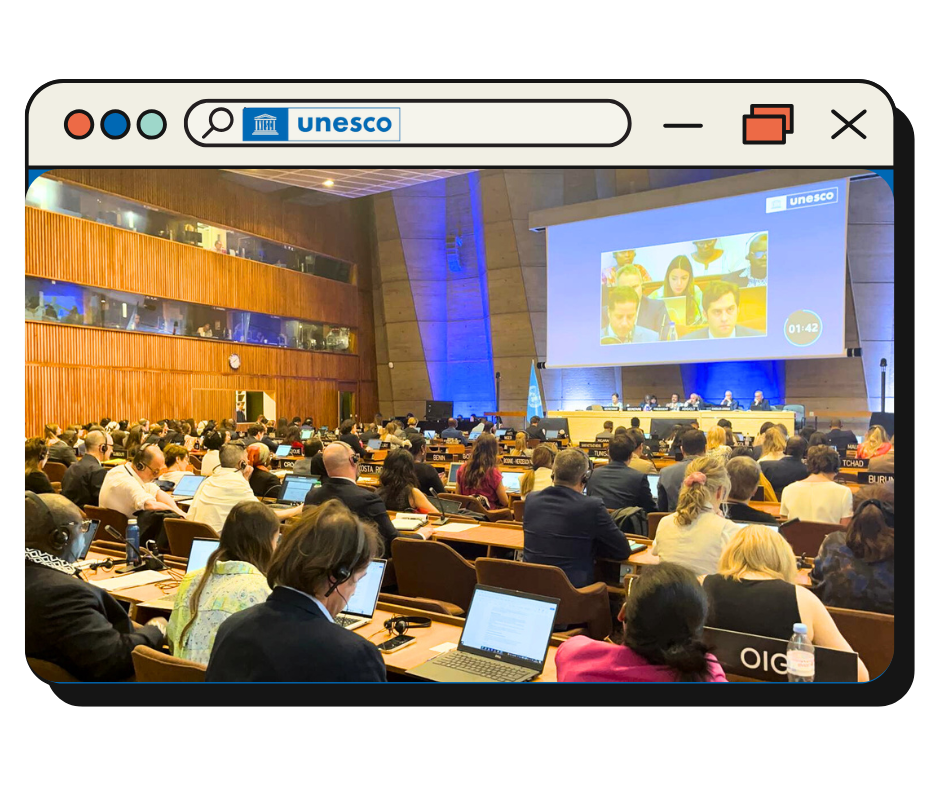
An Additional Protocol? Next Steps
The preliminary study on the feasibility of a new normative instrument will be presented at the 19th session of the Intergovernmental Committee in February 2026, which is expected to decide whether to initiate the procedure. This step would be followed by a resolution from the 11th Conference of Parties in mid-2027. If endorsed at that stage, the proposal would then move beyond the Convention’s governing bodies to be examined by UNESCO Executive Board and General Conference, which have the authority to adopt such instruments under the Rules of Procedure of the Organization. Following established practice, the drafting phase would involve two groups of experts: one independent, then one intergovernmental. Taking all this into account, 2029 appears to be the earliest realistic year for adoption by the General Conference, provided the process advances without further delays or alternative decisions at the 2026 statutory meeting.
But the political context remains sensitive. The United States of America, though not a Party to the 2005 Convention, exerts indirect influence on debates over the diversity of cultural expressions online through the global reach of major digital platforms and technology companies based in its territory. Its announcement in July 2025 of a new withdrawal from UNESCO, effective 31 December 2026, is expected to affect both the Organization’s budget and the tone of certain deliberations. Additionally, the upcoming change in leadership at UNESCO —with the Executive Board nominating a Director-General from the two remaining candidates at its 222nd session in October 2025, followed by the formal election at the 43rd General Conference in November this year— is likely to have some influence on how decisions, such as the adoption of a new normative instrument, are handled in the years ahead.
“While procedural challenges were acknowledged, a number of interventions stressed the urgency of addressing pressing issues affecting cultural diversity in the digital environment, arguing that a more committed approach is needed.”
Some developed countries, including EU Member States, expressed hesitation during the 10th Conference of Parties about moving forward with a Protocol, citing lengthy timelines required for drafting, adoption, and eventual ratification by States, as well as concerns over managing two separate legal texts under the Convention with differing levels of ratification. At the same time, it must be noted that within the EU, certain regulations already address aspects —albeit insufficiently and with enforcement challenges— of the digital environment related to cultural content. These include the Audiovisual Media Services Directive (2018), which requires EU States to ensure that on-demand service providers include at least a 30% share of European works in their catalogues and give them prominent placement; the Digital Services Act (2022), which introduces obligations for very large platforms to disclose certain parameters of their recommender systems and submit transparency reports on content moderation practices; and the AI Act (2024), which seeks to ensure that AI systems placed on the market are safe, enabling the prohibition of certain practices deemed to pose unacceptable risks to fundamental rights.
In contrast to these reservations, several developing countries —particularly from Latin America and the Caribbean, and Africa— called during the last meeting for more decisive action toward a Protocol. While procedural challenges were acknowledged, a number of interventions stressed the urgency of addressing pressing issues affecting cultural diversity in the digital environment, arguing that a more committed approach is needed. For developing and least developed countries, such an instrument could help establish and guide national regulations, bridge capacity gaps in technical and institutional expertise, strengthen negotiating leverage with digital platforms, and provide more tangible means of implementing the Convention’s objectives and principles online.
Annexing a Protocol to existing treaties is not new in UNESCO culture conventions. The 1954 Convention for the Protection of Cultural Property in the Event of Armed Conflict, ratified by 138 States, was complemented by two such instruments (from 1954 and 1999, with 115 and 92 ratifications respectively), providing a clear precedent. Although they have attracted fewer parties than the parent Convention, both carry significant normative weight and have delivered practical results. They require relatively limited additional resources from the Secretariat while enabling stronger monitoring and coordination, thereby reinforcing the original treaty framework and extending its binding reach.
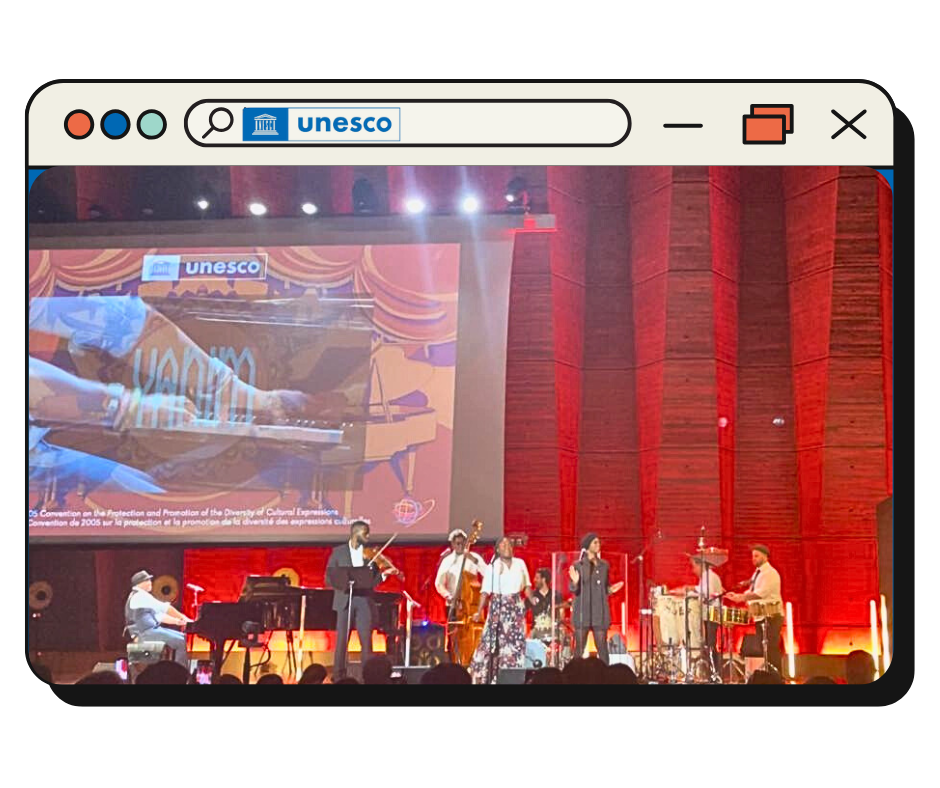
On the Road to MONDIACULT 2025
The 20th anniversary of the Convention coincides with preparations for the UNESCO World Conference on Cultural Policies and Sustainable Development, MONDIACULT 2025, to be held from 29 September to 1 October in Barcelona. Building on the outcomes of MONDIACULT 2022 and its final declaration, adopted in Mexico City —where the first MONDIACULT was held in 1982— the 2025 edition will address 6 priority themes, including digital technologies in the culture sector, alongside 2 cross-cutting axes, one of them being AI and culture. Ministers of Culture, civil society organizations, cultural professionals and researchers from all regions will gather to discuss targeted policy measures and cooperation tools, including how instruments like the 2005 Convention can adapt to current challenges. The potential for an Additional Protocol to the Convention may also be discussed, reflecting ongoing debates on how to enhance the protection and promotion of cultural diversity online.
Other than normative instruments, voluntary initiatives can also advance the implementation of the 2005 Convention. An example is the Fair Culture Charter, launched in September 2024 following a participatory drafting process promoted by the German Commission for UNESCO. The idea of fair culture relates to balanced and sustainable cultural relations and exchanges not only at the international and trade level, but also locally, aiming to strengthen creative value chains. The Charter sets out 8 principles, including decent working conditions and fair remuneration for artists and cultural workers, promoting digital equity, expanding market access, and raising public awareness about the importance of safeguarding the diversity of cultural expressions, including online. Public institutions, civil society organizations and individuals from both developed and developing countries have endorsed this open document, reflecting an enhanced commitment to these matters. Though non-binding, it draws on internationally recognized standards and reinforces the application of the Convention’s objectives and principles through voluntary action.
Two decades on, the 2005 UNESCO Convention stands as a pillar of cultural policy and international cultural law, yet it faces mounting challenges from the speed and complexity of digital transformation. The outcomes of the 10th Conference of the Parties point to an emerging priority that demands urgent attention: safeguarding cultural diversity in the online environment, particularly in the context of the rise of AI technologies. The Convention’s future impact will depend not only on translating commitments into concrete action but also on exploring stronger, binding measures —such as an Additional Protocol— and addressing these issues at the highest policy levels. Without such efforts, the diversity of cultural expressions risks being further eroded in the digital age.
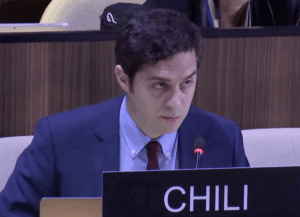
Author: Andrés Muñoz Cárcamo
Lawyer and researcher in cultural rights and policies

